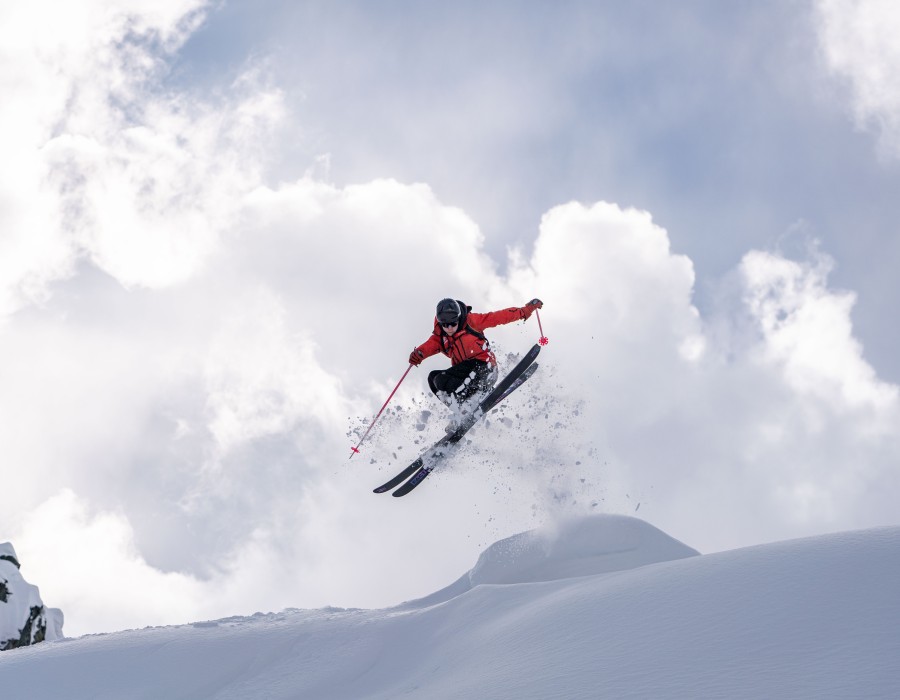Skiing is an exciting sport that attracts many people who love the outdoors and the thrill of gliding down snowy slopes. Among the different styles of skiing, steep skiing stands out as one of the most exhilarating and challenging forms. But what exactly is steep skiing, and what makes it so appealing to adventurous skiers? Let’s dive into the world of steep skiing and explore its allure, techniques, and safety tips.
What is Steep Skiing?
Steep skiing refers to skiing on slopes with a significant incline, usually exceeding 30 degrees. These slopes often feature deep powder snow, rocky terrain, and other natural obstacles, making steep skiing a test of both skill and courage. Steep skiing can be found in various mountain ranges around the world, attracting those who seek an adrenaline rush and breathtaking views.
The Allure of Steep Skiing
- Adrenaline Rush: One of the main reasons skiers are drawn to steep skiing is the adrenaline that comes with it. The thrill of speeding down a steep slope, navigating sharp turns, and conquering obstacles creates a sense of excitement that few other activities can match.
- Stunning Scenery: Steep skiing often takes place in beautiful mountain environments, offering skiers incredible views of nature. The combination of white snow against blue skies and rugged mountain peaks is a sight that leaves a lasting impression.
- Challenge and Growth: Steep skiing is not for the faint of heart. It requires advanced skills and technique, pushing skiers to improve their abilities. The challenge of navigating steep terrain helps skiers grow and gain confidence in their skills.
Techniques for Steep Skiing
Steep skiing demands a different approach compared to regular skiing. Here are some key techniques to keep in mind:
- Body Position: Maintain a low center of gravity by bending your knees and leaning slightly forward. This position helps you stay balanced and in control as you navigate steep slopes.
- Turn Initiation: Initiate turns with your legs and feet rather than your upper body. This technique helps you maintain speed while making sharp turns.
- Speed Control: Use a combination of turns and edging to control your speed. Quick, short turns can help slow you down when necessary.
- Reading the Terrain: Pay close attention to the slope and any obstacles, such as rocks or trees. Anticipating changes in terrain will help you make informed decisions while skiing.
Safety Tips for Steep Skiing
While steep skiing can be incredibly rewarding, it’s essential to prioritize safety. Here are some tips to help you stay safe on the slopes:
- Wear Proper Gear: Make sure you have the right equipment, including skis designed for steep terrain, a helmet, and protective gear. This equipment can help prevent injuries.
- Ski with a Buddy: Never ski alone, especially on steep slopes. Having a partner can provide support and assistance in case of an accident.
- Know Your Limits: Be honest with yourself about your skiing abilities. If you’re not ready for steep terrain, it’s okay to stick to easier slopes until you gain more experience.
- Take Lessons: If you’re new to steep skiing, consider taking lessons from a qualified instructor. They can teach you the techniques and safety practices needed to navigate steep slopes successfully.
Conclusion
Steep skiing is an exhilarating sport that combines skill, courage, and a love for nature. With its adrenaline-pumping thrills and stunning landscapes, it’s no wonder that many skiers are drawn to this exciting activity. However, it’s essential to approach steep skiing with the right techniques and safety measures to ensure a fun and safe experience. Whether you’re an experienced skier or a beginner looking to challenge yourself, steep skiing offers an unforgettable adventure that will leave you wanting more. So gear up, hit the slopes, and embrace the thrill of steep skiing.





Comments